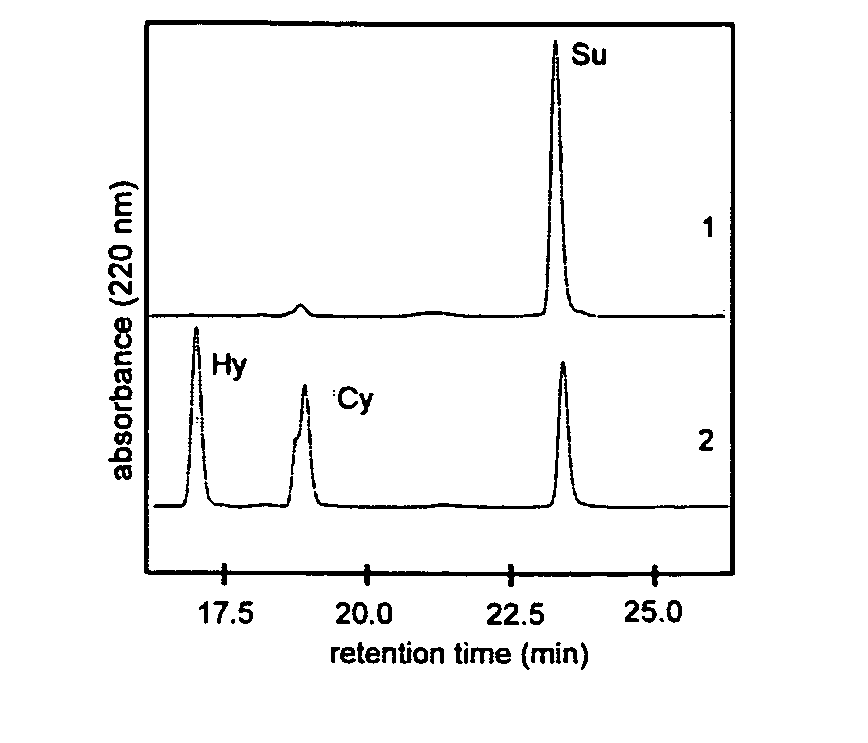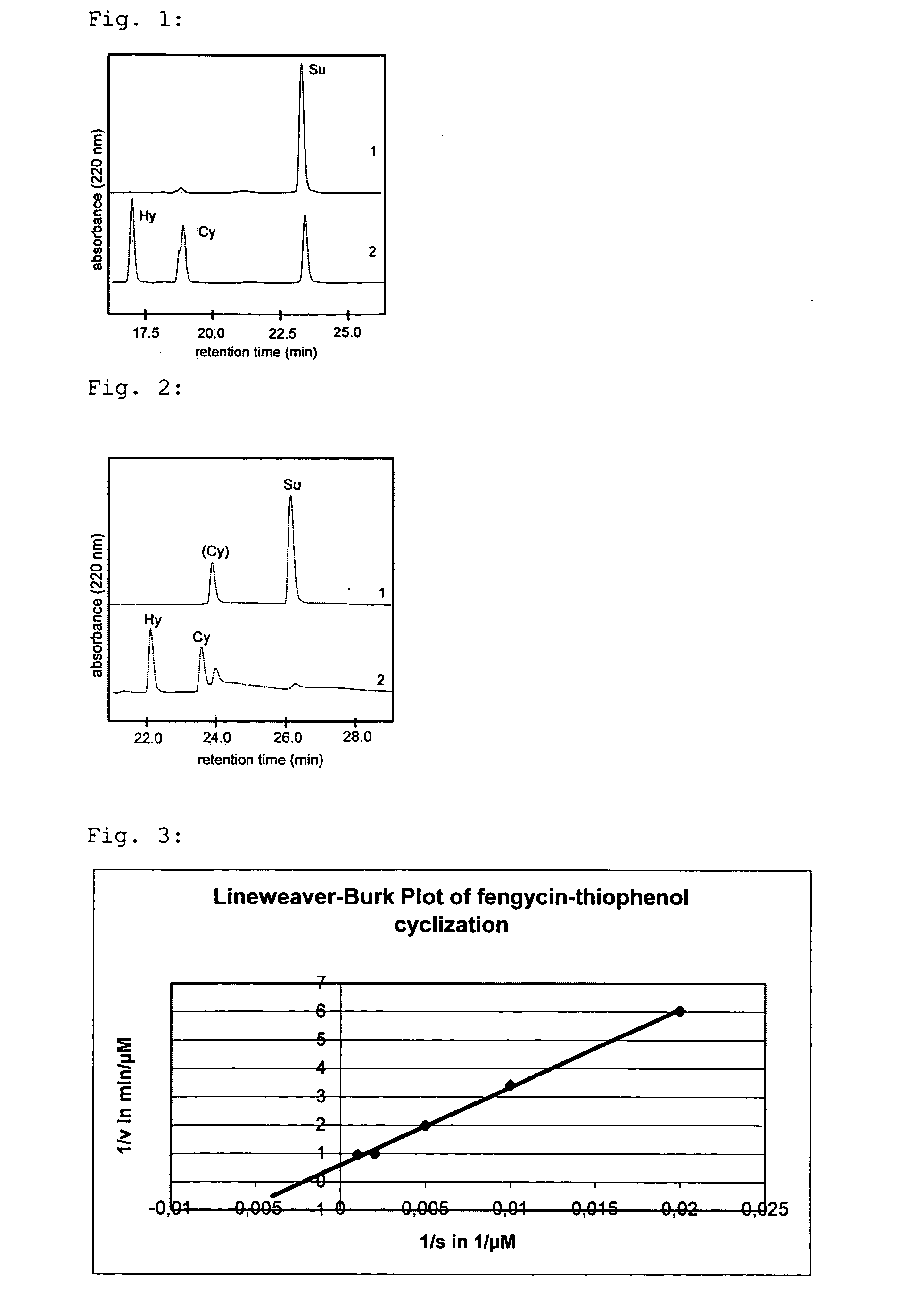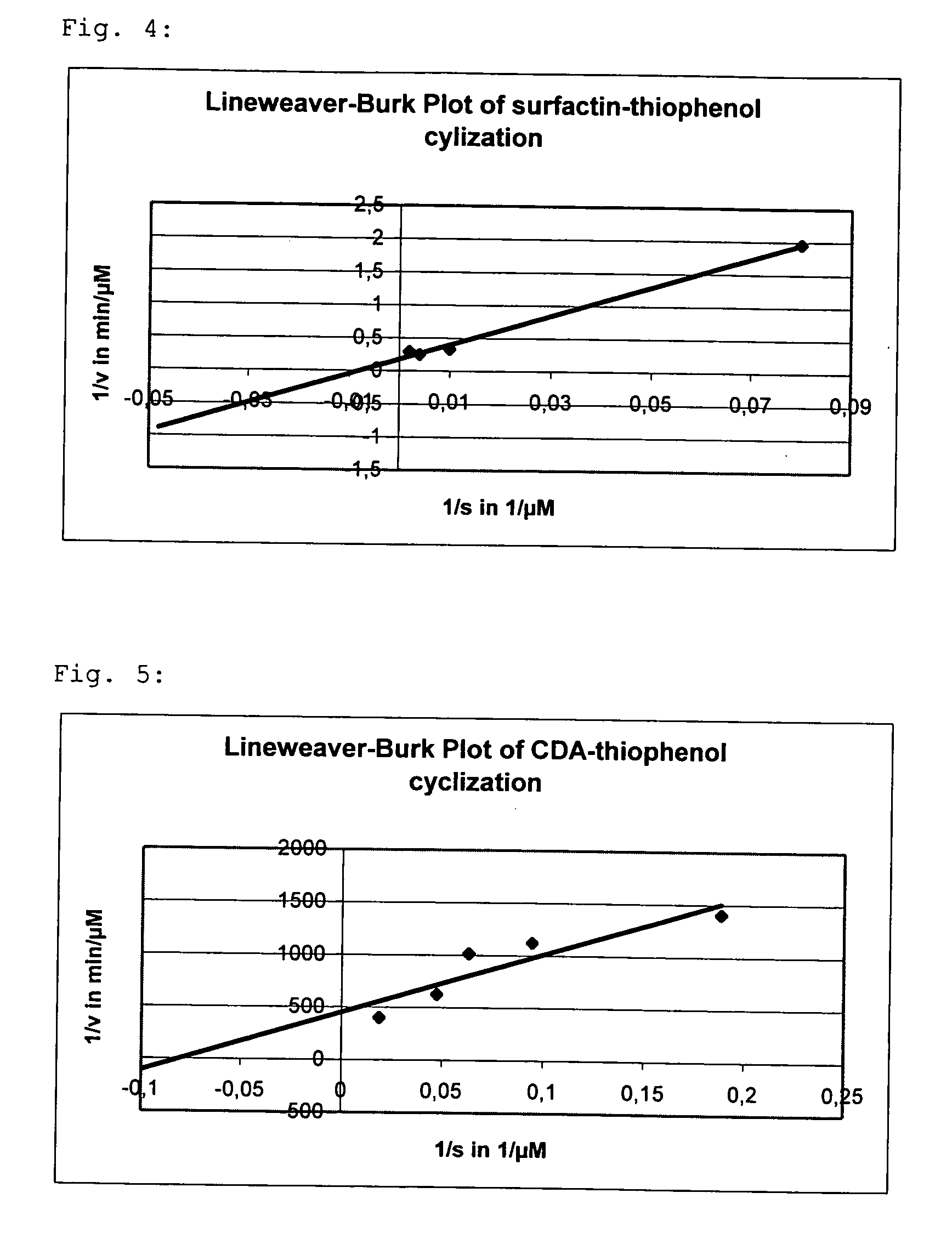Method for the poduction of cyclic molecules
a cyclic molecule and poduction method technology, applied in the field of poduction methods of cyclic molecules, can solve the problems of need to carry out these reactions in organic solvents, need of protective groups to block or protect reactive functional groups, and low yield of cyclic products, so as to accelerate the reaction rate of cyclization and achieve higher yields of cyclic peptides
- Summary
- Abstract
- Description
- Claims
- Application Information
AI Technical Summary
Benefits of technology
Problems solved by technology
Method used
Image
Examples
embodiment 1
Production of the Fengycin-Thiophenol Substrate as well as Cyclization
[0067] The linear fengycin substrate is first produced according to standard methods of peptide solid phase synthesis. The peptide sequence is: Acetyl-Glu-D-Orn-Tyr-D-Thr-Glu-D-Ala-Pro-Gln-D-Tyr-Ile-COOH. In the next step, 0.1 mMol DCC, 0.1 mMol HOBt and 0.5 mMol of thiophenol are added to 0.05 mMol of the peptide and dissolved in 2 ml THF. The mixture is stirred for 30 min at RT, and 0.05 mMol of potassium carbonate is added. The mixture is stirred for a further 2.5 h at RT, subsequently solid DCH is removed by filtration and the solvent is evaporated. The deprotection of the peptide side chains is carried out for 3 h in 2 ml of 95% TFA, 2.5% water and 2.5% triisopropylsilane. The mixture is then poured into 50 ml of ice-cold diethyl ether and the resulting solid is separated by centrifugation. The purification of the solid is carried out by means of preparative HPLC with a Nucleodur C18 column (pore size 100 Å...
embodiment 2
Production and Purification of the Fengycin-Benzylmercaptane Substrate as well as Cyclization
[0070] Production, purification and cyclization of the fengycin-benzylmercaptane substrate were carried out analogously to embodiment 1, wherein in embodiment 20.05 mMol benzylmercaptane is used instead of 0.05 mMol thiophenol. The yield of the cyclized fengycin is approx. 70%.
embodiment 3
Production and Purification of Further Fengycin Substrates as well as Cyclization
[0071] Fengycin is reacted with further leaving groups as described in embodiments 1 and 2. These are 2-mercaptopyridine, p-nitrothiophenol and pentafluorothiophenol. The cyclization of these fengycin substrates is carried out analogously to embodiment 1 and yields significantly higher percentages of the not enzymatically catalyzed cyclization product or the hydrolyzed product than in the case of using thiophenol or benzylmercaptane, respectively.
TABLE 1ionizationmass observed (mass calculated)compoundspeciesmethod(Da)fengycin-[M + H]+ESI1361.40 (1361.60)thiophenolsurfactin-[M + H]+ESI965.40 (965.49)thiophenolCDA-[M + H]+ESI1519.30 (1519.5)thiophenolsyringomycin-[M + H]+ESI1175.60 (1175.54)thiophenol
[0072] The linear peptides fengycin, surfactin, CDA and syringomycin are reacted with thiophenol as described in embodiment 1 and subsequently enzymatically cyclized. Tab. 1 shows the results of the mass...
PUM
| Property | Measurement | Unit |
|---|---|---|
| pKA | aaaaa | aaaaa |
| pKA | aaaaa | aaaaa |
| temperatures | aaaaa | aaaaa |
Abstract
Description
Claims
Application Information
 Login to View More
Login to View More - R&D
- Intellectual Property
- Life Sciences
- Materials
- Tech Scout
- Unparalleled Data Quality
- Higher Quality Content
- 60% Fewer Hallucinations
Browse by: Latest US Patents, China's latest patents, Technical Efficacy Thesaurus, Application Domain, Technology Topic, Popular Technical Reports.
© 2025 PatSnap. All rights reserved.Legal|Privacy policy|Modern Slavery Act Transparency Statement|Sitemap|About US| Contact US: help@patsnap.com



